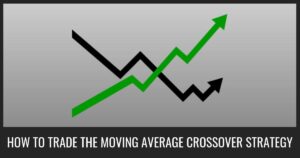The foreign exchange market, or forex for short, is a dynamic beast, constantly churning out price movements that traders try to decipher. In this realm of ebbs and flows, technical indicators serve as valuable tools, offering insights into potential trends and underlying market sentiment. One such indicator, the Linear Regression Slope (LRS), stands out for its ability to gauge both the direction and strength of a trend in the forex market.
Demystifying the LRS: A Statistical Approach to Trends
At its core, the LRS is a technical indicator derived from the concept of linear regression, a statistical method that establishes a relationship between variables. In forex trading, these variables are typically price points over a chosen timeframe. The LRS calculates the slope of the best-fitting straight line drawn through those price points.
Think of it as a line of best fit, slicing through the price action on your chart. The steeper the slope, the stronger the trend. A positive slope indicates an uptrend, where the price is generally increasing, while a negative slope suggests a downtrend. A value close to zero signifies a price moving sideways, with no clear directional bias.
Interpreting the Whisperings of the Slope: Actionable Insights
So, how does a forex trader translate the whispers of the LRS slope into actionable decisions? Here’s a breakdown of the key interpretations:
- Uptrend Confirmation (Positive Slope): A rising LRS slope strengthens the case for an uptrend. It suggests that the price is likely to continue its upward trajectory, potentially offering entry points for long positions (buying the currency pair).
- Downtrend Confirmation (Negative Slope): A falling LRS slope reinforces a downtrend. This indicates that the price is likely to keep declining, creating opportunities for short positions (selling the currency pair).
- Trend Strength: The magnitude of the slope is equally important. A steeper positive slope signifies a stronger uptrend, while a steeper negative slope suggests a more intense downtrend. This information helps traders assess the potential force and longevity of the trend.
- Momentum Shifts: A change in the direction of the LRS slope can be an early warning of a potential trend reversal. For instance, a positive slope flattening out or turning negative might indicate a weakening uptrend and a possible shift towards a downtrend. Conversely, a negative slope starting to rise could signal a potential reversal to the upside.
Beyond Confirmation: Advanced LRS Strategies
While trend confirmation is a valuable function of the LRS, some forex traders delve deeper into crafting more intricate strategies. Here are a couple of examples:
- Curve Strategy: This strategy identifies potential entry and exit points based on the relationship between the price action and the LRS line. When the price deviates significantly from the LRS line, it might suggest a temporary overbought or oversold condition, offering opportunities for counter-trend trades.
- Channel Strategy: This strategy involves constructing a channel around the LRS line, with a certain number of standard deviations above and below it. Trades are then initiated based on price movements relative to this channel. For example, a breakout above the upper channel could signal a continuation of the uptrend, while a breakdown below the lower channel might suggest a potential downtrend.
The Allure and Limitations of the LRS
The LRS offers a compelling combination of simplicity and analytical power. It’s relatively easy to understand and implement, yet provides valuable insights into trend direction and strength. However, forex traders should be aware of its limitations:
- Looking Back, Not Forward: The LRS is a backward-looking indicator, analyzing past price movements. While it can provide hints about future trends, it cannot predict them with certainty. The forex market is inherently unpredictable, and unforeseen events can disrupt even the strongest trends.
- Oversimplification of Markets: The LRS assumes a linear relationship between price points, which isn’t always the case in the real world of forex. Markets can be highly volatile, with periods of consolidation and sudden trend reversals.
- Indicator Dependence: Relying solely on the LRS can be a recipe for disaster. It’s crucial to combine it with other technical indicators, fundamental analysis, and proper risk management practices.
The Art of Combining: LRS in Conjunction with Other Tools
To maximize the effectiveness of the LRS, forex traders should consider incorporating it into a comprehensive trading strategy. Here are some potential companions:
- Moving Averages: Combining the LRS with moving averages can offer additional confirmation of trends and identify potential support and resistance levels.
- Oscillators: Oscillators like the Relative Strength Index (RSI) can help gauge overbought and oversold conditions, potentially aiding entry and exit points within a trend identified by the LRS.
- Price Action: Analyzing price action patterns like breakouts and candlestick formations alongside the LRS can provide a more holistic view of market sentiment and potential trading opportunities.
The Final Word: Mastering the LRS for Informed Decisions
The LRS is a valuable tool in the forex trader’s arsenal. By understanding its core principles, interpreting its signals effectively, and using it in conjunction with other indicators and sound risk management, traders can gain a sharper edge in deciphering trends and making informed trading decisions. Remember, the forex market is a complex and ever-evolving landscape. The LRS is not a magic formula for guaranteed success, but rather a compass that helps navigate the ever-shifting currents of the market. Used wisely, it can empower traders to identify trends, assess momentum, and ultimately, increase their chances of profiting in the dynamic world of forex trading.
Beyond the Basics: Further Exploration
For those who wish to delve deeper into the world of the LRS, here are some additional avenues to explore:
- Exponential Linear Regression Slope: This variation of the LRS places more weight on recent price movements, potentially offering a better gauge of trends in fast-moving markets.
- Customizing the LRS: Many charting platforms allow customizing the LRS by adjusting the number of periods used in the calculation. Experimenting with different timeframes can help tailor the indicator to suit your specific trading style and preferred timeframe.
- Advanced LRS Strategies: Explore advanced strategies like channel breakouts or divergence between the LRS and price action to refine your trading approach.
Remember, successful forex trading is a journey of continuous learning and adaptation. By mastering the LRS and integrating it into your trading toolkit, you’ll be well on your way to navigating the exciting, yet challenging, world of forex.
Let’s Manage Your Forex Funds With Fx Pips Guru!
Fx Pips Guru is a forex fund management company managing client’s funds based on monthly profit share. Let’s do Live Chat with our experts.




